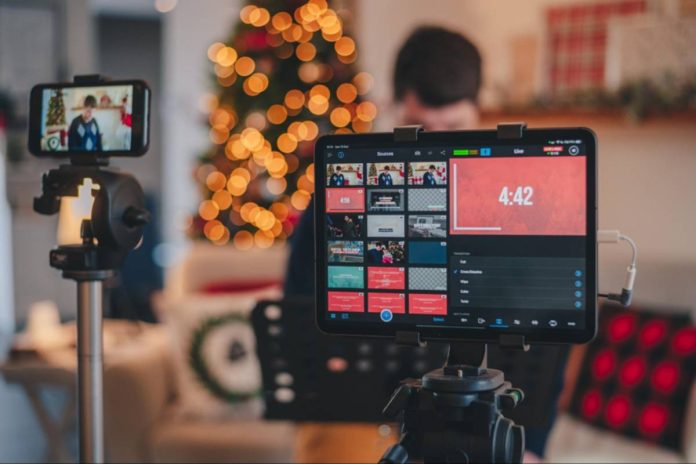Organizing a successful virtual event may be a new challenge to many event planners and attendees due to the current global climate, but it has quickly become a necessary skill to master. However, despite its digital nature, appealing virtual events still demand a well-designed plan, creativity, and commitment. This article will explore key elements and best practices for organizing engaging and satisfactory virtual events in today’s digital world.
Table of Contents
Identify the Goals and Objectives for Your Virtual Event
Before diving into the planning process, it’s crucial to identify the core goals and objectives of your virtual event. This serves as a strong foundation, guiding your decisions through planning and execution, ensuring a purpose-driven and on-target event. Goals might include networking opportunities, education, product showcases, or any combination thereof. Remember, clarity in goals equates to success in the virtual event space. Consider exploring a wide range of themes for your virtual event, such as holiday party ideas to make your event unique and appealing to your target audience.
Assemble a Skilled Team
Like any physical event, success in virtual events depends on the team you build. Assemble a group of professionals with complementary skills to manage various aspects of the event. This cross-functional team should include members experienced in project management, content creation, promotion, and technical support. Having a well-rounded team ensures smooth virtual event planning and execution.
Find the Right Platform
Virtual events heavily rely on technology. As such, selecting a platform that caters to your needs and objectives is paramount. When choosing a virtual event platform, consider factors like user-friendliness and compatibility with devices, including essential features like chat functionality, and attendee engagement tools like polls or surveys. A platform with analytics capabilities should also be considered for tracking the event’s success and measuring the value provided to the attendees.
Promote and Communicate
To attract the desired number of attendees and create buzz around your virtual event, a solid promotion and communication strategy is essential. Leverage your website, social media networks, email marketing, and partnerships with influencers or other organizations to spread awareness about the event. Develop personalized and targeted messages, keeping potential attendees informed and excited throughout the process. Furthermore, ensure your event has a means for attendees to ask questions, share information, and engage with fellow participants before, during, and after the event for maximum impact.
Develop Engaging Content
The success of any event, virtual or physical, lies in the quality of its content. Develop a thoughtful and engaging agenda that captures your target audience’s attention, promotes interaction, and provides valuable insights. This might include informative presentations, panel discussions, or workshops. Keep in mind that virtual events can lead to shorter attention spans, so strive to create content that’s easy to digest, concise, and focused.
Test, Test, and Test Again
Nothing undermines a virtual event more than technical difficulties. To avoid this, thoroughly test all aspects of the event, including microphones, cameras, presentations, and the virtual event platform itself. Conduct a dress rehearsal in as close to real conditions as possible to identify any potential glitches and rectify them well ahead of the event date.
Incorporate Interactive Elements
Engaging your audience is crucial to your virtual event’s success. Consider incorporating interactive elements such as live polls, real-time Q&A sessions, and gamification by including quizzes and competitions. Interactive features help maintain attendee interest, encourage participation, and create a more immersive experience, making your virtual event stand out from the rest.
Create Networking Opportunities
A major draw for events is the networking aspect. Virtual events should also facilitate these connections through chat rooms, virtual breakout sessions, or dedicated networking segments in the agenda. These opportunities not only promote interaction and engagement but also add value to the attendee experience.
Evaluate and Learn from Your Event
After your virtual event concludes, take the time to evaluate its success. Gather feedback from attendees and analyze available data from your event platform to identify areas that worked well and those that didn’t. Use this information to constantly improve and enhance future virtual events, ensuring ongoing growth and refinement in your approach.
Foster Accessibility and Inclusiveness
One of the advantages of virtual events is their ability to reach a wider audience across geographical locations. To maximize your event’s reach, ensure that it caters to diverse needs and preferences. Offer subtitles, sign language interpreters, or transcription services for attendees with hearing impairments. Additionally, structure your agenda to accommodate different time zones when hosting attendees from across the globe.
Conclusion
Mastering the art of virtual events requires a thoughtful plan, attention to detail, and the right team. With clear objectives, engaging content, a user-friendly platform, and ample networking opportunities, your virtual event is well-positioned for success. Embrace the challenges and opportunities of the digital realm, and watch your virtual event flourish.


Review Become a Master of Virtual Events with These Tips.